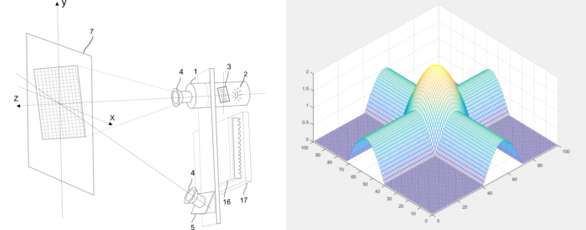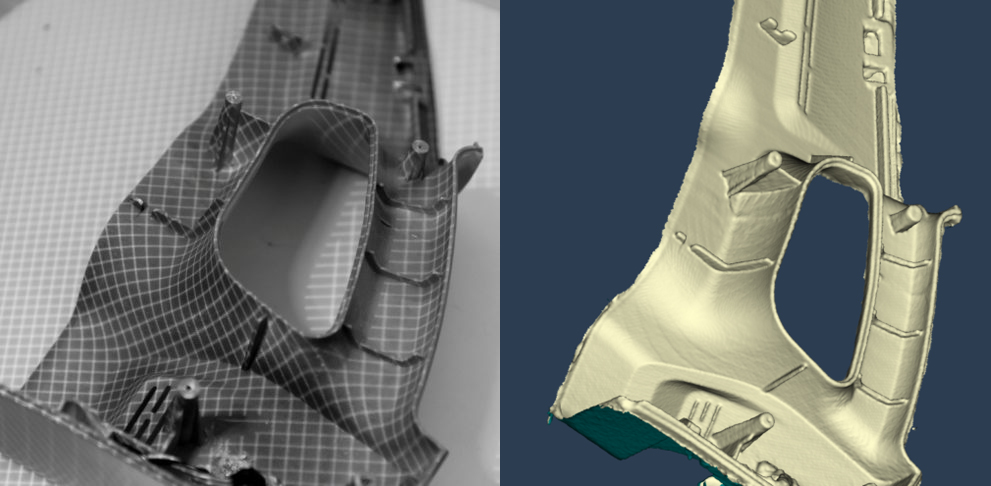
Over the past few weeks, since the announcement of our new 3D scanner “Drake”, we’ve been overwhelmed by the incoming inquiries. It turns out we were correct in assuming that the market was waiting for a device that can “do it all”: 3D scan almost any object (from a coin to a yacht). However, this 3D scanner is not just an interesting idea which has come to life, it also encompassed sophisticated patented technology (#RU164082 from December 2015) and novel mathematical methods.
First of all, Drake is the only 3D scanner on the market that uses a completely new way of 3D surface reconstruction and two projectors, instead of one. The device uses them to project two distinct sets of lines creating a light grid. The “slide” (otherwise known as a “projection pattern”) is positioned in such a way inside the scanner that one set of lines is responsible for rough reconstruction, while the other set of lines (perpendicular) creates precise reconstruction. This duality allows for unprecedented sharp edge reconstruction, which is a very difficult task for scanners that use older approaches such as “coded structured light” or “coded pattern”.
Second of all, 3D scanner Drake uses its combination of 2 cameras and 2 projectors in a unique way. Although this method can work well with just one camera, we’ve added a second camera just to gather more data quicker (side note: there is actually a third camera in Drake, but it’s used exclusively to capture texture and not geometry). So, two sets of lines are projected (one vertical, one horizontal) and seen by the cameras simultaneously, allowing for faster reconstruction of sharp edges. Moreover, the two projectors are used to get more information on the intensity of the projected pattern, as well as, the intensity of the joints (where the two lines intersect). This method works best, when one projector projects one set of stripes for rough reconstruction and the second projects for refined reconstruction, as opposed to using one projector for the whole grid.

And lastly, Drake is the only 3D scanner on the market that uses the Fourier Transform method. This sophisticated mathematical approach enables the built-in software to accurately separate the two projected sets of stripes, which allows us to work with each set individually. Furthermore, with the help of two cameras, we can obtain 3D information from each set of stripes using stereo reconstruction. This approach creates a tighter mesh with more data and higher accuracy.

